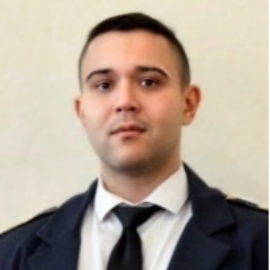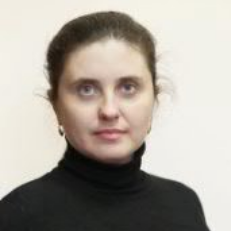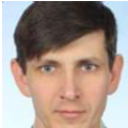International Journal of Image, Graphics and Signal Processing (IJIGSP)
IJIGSP Vol. 16, No. 5, 8 Oct. 2024
Cover page and Table of Contents: PDF (size: 1133KB)
Modified Kalman Filter with Chebyshev Points Based on a Recurrent Neural Network for Automatic Control System Measuring Channels Diagnosing and Parring off Failures
PDF (1133KB), PP.36-61
Views: 0 Downloads: 0
Author(s)
Index Terms
Kalman filter, recurrent neural network, diagnosing and parring failures, automatic control system
Abstract
The article is devoted to the modified multidimensional Kalman filter with Chebyshev points development to solve the task of diagnosing and parring off failures in the measurement channels of complex dynamic objects automatic control system, which will provide a more accurate and reliable assessment of system state in the presence of outliers in the data. An implementation of the proposed modified multidimensional Kalman filter with Chebyshev points is proposed in the form of a modified recurrent neural network containing a failure diagnostics layer, a failure parry layer, a filtering and smoothing layer, and a results aggregation layer. This structure of the modified recurrent neural network made it possible to solve the main problems of the method of diagnosing and parring off failures of the measuring channels of complex dynamic objects automatic control system, such as diagnosing failures with an accuracy of 0.99802, fending off failures with an accuracy of 0.99796, and assessing the state of the system with an accuracy of 0.99798. It is proposed to use a modified loss function of a recurrent neural network as a general loss function for diagnostics, fault restoring and system state assessment, which makes it possible to avoid retraining when there are a large number of parameters or insufficient data. It has been experimentally proven that the loss function remains stable on both the training and validation data sets for 1000 training epochs and does not go beyond –2.5 % to +2.5 %, which indicates a low-risk overtraining or undertraining of the model. It has been experimentally confirmed that the use of a modified recurrent neural network in solving the task of diagnosing and parring off failures of the measuring channels of complex dynamic objects automatic control system is appropriate in comparison with a radial basis functions neural network and a multidimensional Kalman filter without a neural network implementation, based on metrics such as the root mean square deviation, mean absolute error, mean absolute percentage error, coefficient of determination for the accuracy of reproducing previous data, and coefficient of determination for the accuracy of predicting future values. For example, the value of the standard deviation of the modified recurrent neural network is 0.00226, which is 1.65 times less than the radial basis function neural network and 2.20 times less than the multidimensional Kalman filter without a neural network implementation.
Cite This Paper
Serhii Vladov, Oleksandr Muzychuk, Victoria Vysotska, Alexey Yurko, Dmytro Uhryn, "Modified Kalman Filter with Chebyshev Points Based on a Recurrent Neural Network for Automatic Control System Measuring Channels Diagnosing and Parring off Failures", International Journal of Image, Graphics and Signal Processing(IJIGSP), Vol.16, No.5, pp. 36-61, 2024. DOI:10.5815/ijigsp.2024.05.04
Reference
[1]C. Campestrini, T. Heil, S. Kosch, A. Jossen, “A comparative study and review of different Kalman filters by applying an enhanced validation method”, Journal of Energy Storage, vol. 8, pp. 142–159, 2016. https://doi.org/10.1016/j.est.2016.10.004
[2]J. Siswantoro, A. S. Prabuwono, A. Abdullah, B. Idrus, “A linear model based on Kalman filter for improving neural network classification performance”, Expert Systems with Applications, vol. 49, pp. 112–122, 2016. https://doi.org/10.1016/j.eswa.2015.12.012
[3]Y. Li, B. Wahlberg, X. Hu, L. Xie, “Inverse Kalman filtering problems for discrete-time systems”, Automatica, vol. 163, 111560, 2024. https://doi.org/10.1016/j.automatica.2024.111560
[4]Q. Luo, S. Li, X. Yan, C. Wang, Z. Zhou, G. Jia, “An improved two-phase robust distributed Kalman filter”, Signal Processing, vol. 220, 109438, 2024. https://doi.org/10.1016/j.sigpro.2024.109438
[5]Y. Li, B. Wahlberg, X. Hu, L. Xie, “Inverse Kalman filtering problems for discrete-time systems”, Automatica, vol. 163, 111560, 2024. https://doi.org/10.1016/j.automatica.2024.111560
[6]X. Song, W. X. Zheng, “A Kalman-filtering derivation of input and state estimation for linear discrete-time systems with direct feedthrough”, Automatica, vol. 161, 111453, 2024. https://doi.org/10.1016/j.automatica.2023.111453
[7]R. Liu, M. Liu, G. Duan, X. Cao, “Robust adaptive smooth variable structure Kalman filter for spacecraft attitude estimation”, Aerospace Science and Technology, vol. 144, 108784, 2024. https://doi.org/10.1016/j.ast.2023.108784
[8]X. Li, A. Lei, L. Zhu, M. Ban, “Improving Kalman filter for cyber physical systems subject to replay attacks: An attack-detection-based compensation strategy”, Applied Mathematics and Computation, vol. 466, 128444, 2024. https://doi.org/10.1016/j.amc.2023.128444
[9]D. C. dos Santos Gomes, G. L. de Oliveira Serra, “Interval type-2 evolving fuzzy Kalman filter for processing of unobservable spectral components from uncertain experimental data”, Journal of the Franklin Institute, vol. 361, issue 2, pp. 637–669, 2024. https://doi.org/10.1016/j.jfranklin.2023.12.017
[10]M. Ma, L. Fu, Z. Zhai, R.-B. Sun, “Transformer based Kalman Filter with EM algorithm for time series prediction and anomaly detection of complex systems”, Measurement, vol. 229, 114378, 2024. https://doi.org/10.1016/j.measurement.2024.114378
[11]F. Farahi, H. S. Yazdi, “Probabilistic Kalman filter for moving object tracking”, Signal Processing: Image Communication, vol. 82, 115751, 2020. https://doi.org/10.1016/j.image.2019.115751
[12]A. Rahdan, H. Bolandi, M. Abedi, “Design of on-board calibration methods for a digital sun sensor based on Levenberg–Marquardt algorithm and Kalman filters”, Chinese Journal of Aeronautics, vol. 33, issue 1, 339–351, 2020. https://doi.org/10.1016/j.cja.2019.08.011
[13]A. G. Wills, T. B. Schon, “Stochastic quasi-Newton with line-search regularisation”, Automatica, vol. 127, 109503, 2021. https://doi.org/10.1016/j.automatica.2021.109503
[14]M. Ihme, W. T. Chung, A. A. Mishra, “Combustion machine learning: Principles, progress and prospects”, Progress in Energy and Combustion Science, vol. 91, 101010, 2022. https://doi.org/10.1016/j.pecs.2022.101010
[15]H. Yousefnejad, M. S. Monfared, “A control algorithm for a non-stationary batch service production system using Kalman filter”, Expert Systems with Applications, vol. 207, 117916, 2022. https://doi.org/10.1016/j.eswa.2022.117916
[16]C. A. Gomez-Uribe, B. Karrer, “The Decoupled Extended Kalman Filter for Dynamic Exponential-Family Factorization Models”, Journal of Machine Learning Research, vol. 22, pp. 1–15, 2022. URL: https://www.jmlr.org/papers/volume22/18-417/18-417.pdf
[17]T. M. Chin, “Square-Root Formulas for Kalman Filter, Information Filter, and RTS Smoother: Links via Boomerang Prediction Residual”, IPN Progress Report, vol. 42-233, pp. 1–23, 2023. URL: https://ipnpr.jpl.nasa.gov/progress_report/42-233/42-233A.pdf
[18]Q. Ge, Y. Cheng, G. Yao, S. Chen, Y. Zhu, “Credible Gaussian sum cubature Kalman filter based on non-Gaussian characteristic analysis”, Neurocomputing, vol. 565, 126922, 2024. https://doi.org/10.1016/j.neucom.2023.126922
[19]S. Zhong, B. Peng, J. He, Z. Feng, M. Li, G. Wang, “Kalman filtering based on dynamic perception of measurement noise”, Mechanical Systems and Signal Processing, vol. 213, 111343, 2024. https://doi.org/10.1016/j.ymssp.2024.111343
[20]S. Vladov, Y. Shmelov, R. Yakovliev, M. Petchenko, “Helicopters Turboshaft Engines Parameters Identification Using Neural Network Technologies Based on the Kalman Filter”, Communications in Computer and Information Science, vol. 1980, pp. 82–97, 2023. https://doi.org/10.1007/978-3-031-48325-7_7
[21]S. Vladov, Y. Shmelov, R. Yakovliev, M. Petchenko, Drozdova, “Neural Network Method for Helicopters Turboshaft Engines Working Process Parameters Identification at Flight Modes”, in: Proceedings of the 2022 IEEE 4th International Conference on Modern Electrical and Energy System (MEES), Kremenchuk, Ukraine, October 20–22, 2022, pp. 604–609. https://doi.org/10.1109/MEES58014.2022.10005670
[22]S. Vladov, Y. Shmelov, R. Yakovliev, “Helicopters Aircraft Engines Self-Organizing Neural Network Automatic Control System”, CEUR Workshop Proceedings, vol. 3137, pp. 28–47, 2022. https://doi.org/10.32782/cmis/3137-3 URL: https://ceur-ws.org/Vol-3137/paper3.pdf
[23]S. Vladov, R. Yakovliev, O. Hubachov, J. Rud, “Neuro-Fuzzy System for Detection Fuel Consumption of Helicopters Turboshaft Engines”, CEUR Workshop Proceedings, vol. 3628, pp. 55–72, 2024. URL: https://ceur-ws.org/Vol-3628/paper5.pdf
[24]T. Kuznetsova, Y. Likhacheva, E. Gubarev, A. Yakushev, “The identification of gas turbine engine parameters by the multidimensional Kalman filter”, Vestnik PSTU, no. 10, pp. 114–126, 2014.
[25]T. Kuznetsova, E. Gubarev, V. Avgustinovich, “The algorithms of measuring channels’ fault diagnostics and counteraction for automatic control system of aero-engines”, Vestnik PSTU, no. 16, pp. 5–14, 2015.
[26]T. Kuznetsova, E. Gubarev, “Fault-tolerant algorithms for identifying input information of an on-board mathematical model as part of an automatic control system for an aircraft engine”, Fundamental research, no. 6-1, pp. 39–43, 2015.
[27]S. Vladov, R. Yakovliev, O. Hubachov, J. Rud, Y. Stushchanskyi, “Neural Network Modeling of Helicopters Turboshaft Engines at Flight Modes Using an Approach Based on “Black Box” Models”, CEUR Workshop Proceedings, vol. 3624, pp. 116–135, 2024. URL: https://ceur-ws.org/Vol-3624/Paper_11.pdf
[28]S. Vladov, Y. Shmelov, R. Yakovliev, and M. Petchenko, “Neural Network Method for Parametric Adaptation Helicopters Turboshaft Engines On-Board Automatic Control,” CEUR Workshop Proceedings, vol. 3403, pp. 179–195, 2023. URL: https://ceur-ws.org/Vol-3403/paper15.pdf
[29]H. Sheng, Q. Chen, J. Li, W. Jiang, Z. Wang, Z. Liu, T. Zhang, Y. Liu, “Research on dynamic modeling and performance analysis of helicopter turboshaft engine's start-up process”, Aerospace Science and Technology, vol. 106, 106097, 2020. https://doi.org/10.1016/j.ast.2020.106097
[30]P. Yun, P. Wu, S. He, X. Li, “A variational Bayesian based robust cubature Kalman filter under dynamic model mismatch and outliers interference”, Measurement, vol. 191, 110063, 2022. https://doi.org/10.1016/j.measurement.2021.110063
[31]J. He, G. Wang, H. Yu, J. M. Liu, B. Peng, “Generalized minimum error entropy Kalman filter for non-Gaussian noise”, ISA Transactions, vol. 136, pp. 663–675, 2023. https://doi.org/10.1016/j.isatra.2022.10.040
[32]A. Abdulnagimov, G. Ageev, “Neural network technologies in hardware-in-the-loop simulation: principles of gas turbine digital twin development”, Informatics, Computer Science and Management, vol. 23, no. 4 (86), pp. 115–121, 2019.
[33]Z. Liu, S. Chen, H. Wu, F. Liang, “Orthogonal Simplex Chebyshev-Laguerre Cubature Kalman Filter Applied in Nonlinear Estimation Systems”, Applied Sciences, vol. 8 (6), 863, 2018. https://doi.org/10.3390/app8060863
[34]S. K. Biswas, L. Qiao, A. G. Dempster, “A quantified approach of predicting suitability of using the Unscented Kalman Filter in a non-linear application”, Automatica, vol. 241, 109241, 2020. https://doi.org/10.1016/j.automatica.2020.109241
[35]K. Hoppe, F. Giesa, G. Schaldach, M. Thommes, D. Pieloth, “Optimization of filter structures by evolutionary strategies”, Materials Today Communications, vol. 38, 108510, 2024. https://doi.org/10.1016/j.mtcomm.2024.108510
[36]O. Adigun, B. Kosko, “Noise-boosted recurrent backpropagation”, Neurocomputing, vol. 559, 126438, 2023. https://doi.org/10.1016/j.neucom.2023.126438
[37]C. Ruiz, C. M. Alaíz, J. R. Dorronsoro, “Convex formulation for multi-task L1-, L2-, and LS-SVMs”, Neurocomputing, vol. 456, pp. 599–608, 2021. https://doi.org/10.1016/j.neucom.2021.01.137
[38]Z. Hou, L. Yu, Y. Liang, B. Xu, Y. Lei, “Integrating L1 and weighted L2 regularization for moving force identification from combined response measurements”, Measurement, vol. 228, 114337, 2024. https://doi.org/10.1016/j.measurement.2024.114337
[39]X. Cao, H. Luo, J. Tai, R. Jiang, G. Wang, “Multi-agent target search strategy optimization: Hierarchical reinforcement learning with multi-criteria negative feedback”, Applied Soft Computing, vol. 149, part A, 110999, 2023. https://doi.org/10.1016/j.asoc.2023.110999
[40]E. Birihanu, “Analysis of Software Quality Using Software Metrics”, International Journal on Computational Science & Applications, vol. 8 (4/5), pp. 11–28, 2018. https://doi.org/10.5121/ijcsa.2018.8502
[41]F. S. Corotto, “Appendix C - The method attributed to Neyman and Pearson”, Wise Use of Null Hypothesis Tests, pp. 179–188, 2023. https://doi.org/10.1016/B978-0-323-95284-2.00012-4
[42]F. V. Motsnyi, “Analysis of Nonparametric and Parametric Criteria for Statistical Hypotheses Testing. Chapter 1. Agreement Criteria of Pearson and Kolmogorov”, Statistics of Ukraine, no. 4’2018 (83), pp. 14–24, 2018. https://doi.org/10.31767/su.4(83)2018.04.02
[43]Y.-M. Tamm, R. Damdinov, A. Vasilev, “Quality Metrics in Recommender Systems: Do We Calculate Metrics Consistently?”, in Proceedings of the 15th ACM Conference on Recommender Systems, Amsterdam, Netherlands, 27 September 2021 – 01 October 2021, pp. 708–713. https://doi.org/10.1145/3460231.3478848
[44]S. Vladov, R. Yakovliev, M. Bulakh, and V. Vysotska, “Neural Network Approximation of Helicopter Turboshaft Engine Parameters for Improved Efficiency”, Energies, vol. 17, issue 9, 2233, 2024. https://doi.org/10.3390/en17092233
[45]Z. Hu, O. Shkurat, and M. Kasner, “Grayscale Image Colorization Method Based on U-Net Network”, International Journal of Image, Graphics and Signal Processing (IJIGSP), vol. 16, no. 2, pp. 70–82, 2024. https://doi.org/10.5815/ijigsp.2024.02.06
[46]S. Babichev, J. Krejci, J. Bicanek, and V. Lytvynenko, “Gene expression sequences clustering based on the internal and external clustering quality criteria”, in: Proceedings of the 2017 12th International Scientific and Technical Conference on Computer Sciences and Information Technologies (CSIT), Lviv, Ukraine, September 05–08, 2017. https://doi.org/10.1109/STC-CSIT.2017.8098744
[47]S. Vladov, L. Scislo, V. Sokurenko, O. Muzychuk, V. Vysotska, S. Osadchy, A. Sachenko, “Neural Network Signal Integration from Thermogas-Dynamic Parameter Sensors for Helicopters Turboshaft Engines at Flight Operation Conditions”, Sensors. vol. 24, issue 13, 4246, 2024. https://doi.org/10.3390/s24134246
[48]S. Vladov, R. Yakovliev, V. Vysotska, M. Nazarkevych, V. Lytvyn, “The Method of Restoring Lost Information from Sensors Based on Auto-Associative Neural Networks,” Applied System Innovation, vol. 7, no. 3. 53, 2024. https://doi.org/10.3390/asi7030053
[49]X. Liu, Y. Chen, L. Xiong, J. Wang, C. Luo, L. Zhang, K. Wang, “Intelligent fault diagnosis methods toward gas turbine: A review”, Chinese Journal of Aeronautics, vol. 37, issue 4, pp. 93–120, 2024. https://doi.org/10.1016/j.cja.2023.09.024
[50]S.S. Talebi, A. Madadi, A.M. Tousi, M. Kiaee, “Micro Gas Turbine fault detection and isolation with a combination of Artificial Neural Network and off-design performance analysis”, Engineering Applications of Artificial Intelligence, vol. 113, 104900, 2022. https://doi.org/10.1016/j.engappai.2022.104900
[51]S. Pang, Q. Li, B. Ni, “Improved nonlinear MPC for aircraft gas turbine engine based on semi-alternative optimization strategy”, Aerospace Science and Technology, vol. 118, 106983, 2021. https://doi.org/10.1016/j.ast.2021.106983
[52]A. R. Marakhimov, K. K. Khudaybergenov, “Approach to the synthesis of neural network structure during classification,” International Journal of Computing, vol. 19, issue 1, pp. 20–26, 2020. https://doi.org/10.47839/ijc.19.1.1689
[53]E. M. Cherrat, R. Alaoui, H. Bouzahir, “Score fusion of finger vein and face for human recognition based on convolutional neural network model,” International Journal of Computing, vol. 19, issue 1, pp. 11–19, 2020. https://doi.org/10.47839/ijc.19.1.1688
[54]T. E. Romanova, P. I. Stetsyuk, A. M. Chugay, S. B. Shekhovtsov, “Parallel Computing Technologies for Solving Optimization Problems of Geometric Design,” Cybernetics and Systems Analysis, vol. 55, no. 6, pp. 894–904, 2019. https://doi.org/10.1007/s10559-019-00199-4.
[55]Z. Hu, I. Dychka, K. Potapova, V. Meliukh, “Augmenting Sentiment Analysis Prediction in Binary Text Classification through Advanced Natural Language Processing Models and Classifiers”, International Journal of Information Technology and Computer Science, vol. 16, no. 2, pp. 16–31
[56]R. Peleshchak, V. Lytvyn, I. Peleshchak, D. Dudyk, D. Uhryn, “Data Clustering by Chaotic Oscillatory Neural Networks with Dipole Synaptic Connections”, International Journal of Modern Education and Computer Science, vol. 16, no. 3, pp. 27–38, 2024.
[57]V. Sahana, R. Shashidhar, R. Bindushree, A.N. Chandana, “IOT Based Burglar Detection and Alarming System Using Raspberry Pi”, International Journal of Engineering and Manufacturing, vol. 13, no. 6, pp. 23–37, 2023.
[58]S. Vladov, Y. Shmelov, R. Yakovliev, Y. Stushchanskyi, Y. Havryliuk, “Neural Network Method for Controlling the Helicopters Turboshaft Engines Free Turbine Speed at Flight Modes”, CEUR Workshop Proceedings, vol. 3626, pp. 89–108, 2023.
[59]S. Gudla, and K.N. Rao, “Reliable Data Delivery Using Fuzzy Reinforcement Learning in Wireless Sensor Networks”, International Journal of Computer Network and Information Security, vol. 15, no. 4, pp. 96–107, 2023.




